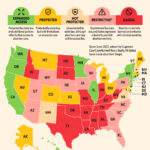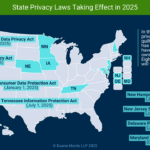
The Landscape of Abortion Rights in a Post-Trump-Era
The issue of abortion rights in America, complicated to begin with, has become even more so with the re-election of President Donald Trump. It’s not about the President instituting a national ban on abortion. Rather, it’s about his use of executive authority to rollback federal protections, unleashing an era of daunting changes within the States’ purview.
Unpacking Trump’s Abortion Rights Narrative
President Trump has made assertions around ‘returning abortion to the states.’ One could argue there’s an air of democracy about this comment, making it seem more palatable. But as we take a closer look, we realize this is a ruse, intended only to smokescreen real intent. The details are loaded with potency; far from leaving states to decide, the plans to curtail abortion rights have gained new impetus under his regime.
Decoding the Implications of Dobbs v. Jackson for Abortion Rights
Post the Dobbs v. Jackson verdict, a truckload of state laws have further constrained abortion limits, sometimes expunging even exceptions for rape, incest, and making it a punishable offense. It’s as though navigating through an already maze-like policy landscape for women has become even trickier.
Understanding the Nuances: States and Abortion Regulation
Herein lays a frequently overlooked point. Under Roe v. Wade, the states already had the mandate to regulate abortions. By stating the verdict only ‘returned power to the States,’ we turn a blind eye to the fine shades of states rights under Roe, which were significantly different than those under the Dobbs rule. This slight twist reframes the entire impact of the judgment, highlighting the subtle parts our immediate understanding might miss.
The Fallacies of the “Returning Abortion to States” Argument
Claiming that overturning Roe is a democratic move is far from the truth. The Dobbs rule upset the nuances of abortion laws, putting a dent in the core principle of a woman’s access to abortion as a constitutional right—it declared there was no fundamental right to abortion. This stands in stark contrast to the Roe law, which, despite its intricate language, balanced a woman’s need for privacy in abortion decisions and the state’s authority to regulate it.
The Roe v. Wade Framework: A Compromised Balance
Roe established a trimester-based system. This laid out a path through the tangled issues of abortion regulations. It principally put a woman’s right to privacy and the state’s right to protect unborn life on a scale and sought to strike a balance between these fine points.
In the first trimester, Roe gave women full control over their bodies, with no state intrusion. In contrast, the second trimester allowed states to establish reasonable regulations. States seized this chance, each tailoring regulations according to their own ethos. In the third trimester, states could prohibit abortion, if they so desired.
Losing Balance in the Wake of Dobbs v. Jackson
With Dobbs, the delicate equilibrium achieved under Roe went for a toss. The verdict fundamentally ended the recognition of a woman’s right to abortion. What were the implications of the Supreme Court’s refusal to modify Roe? It yanked away the sense of balance in our law and country. The idea that there is a right to abortion went from being recognized, albeit with regulations, to being completely dismissed. And without it, achieving balance is a tall order.
States Taking the Wheel: The Devastating Impact of Dobbs
Following Dobbs, states got far more power over abortion laws than the Roe ruling ever granted. They now had the reign in their hands to regulate abortion. This shift permitted states to impose stringent rules, including the banning of abortion only six weeks into the pregnancy (even before some women may realize they are pregnant).
The Road Ahead: A Call for Return to Balance
Regardless of the criticisms against Roe v. Wade, it was a commendable attempt to bring balance into the deeply divisive issue of abortion. We now need to wean away from giving states’ uncontrolled power and seek a renewed path that restores the balance in the country.
Ensuring every woman’s right to make decisions regarding her body, while acknowledging the authority of the states, calls for joint efforts in understanding and solving the tricky parts of this problem. A reinvigorated dialogue, a closer examination of the hidden complexities, and a will to steer through the rough terrains of these constitutional law changes are key to achieving this equilibrium.
Originally Post From https://www.duluthnewstribune.com/opinion/columns/pro-con-states-had-ability-to-regulate-abortion-before-trumps-return

